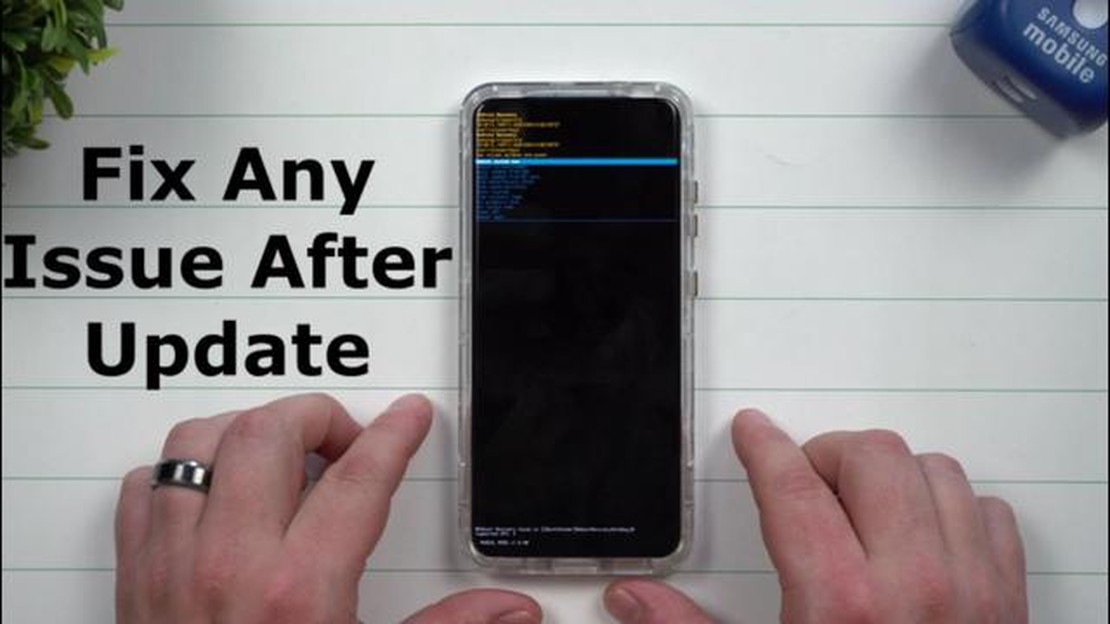How to Fix 'Steam Needs to be Online to Update' Error - Step-by-Step Guide
How To Fix Steam Needs To Be Online To Update Error If you are a PC gamer, chances are you are familiar with Steam - the popular digital distribution …
Read Article
Welcome to our troubleshooting guide for the Samsung Galaxy S5 software update issues. The Galaxy S5 is a powerful device that offers a range of features and capabilities. However, like any other smartphone, it can encounter software-related problems. One common problem that users may face is the software update repeating itself. This can be frustrating and can prevent users from accessing the latest features and improvements. In this guide, we will explore this issue in-depth and provide step-by-step solutions to help you resolve it.
One possible cause of the software update repeating itself on your Galaxy S5 is a faulty installation or update process. This can occur if the update files were not downloaded or installed correctly. Additionally, a corrupted system cache or firmware can also contribute to this issue. To fix this problem, there are several troubleshooting steps you can follow. Firstly, you can try clearing the cache partition on your device. This will remove any temporary files or data that may be causing the software update to repeat itself. To do this, follow the steps below:
If clearing the cache partition does not resolve the issue, you can also try performing a factory reset on your Galaxy S5. This will erase all data and settings on your device, so it is important to backup your data beforehand. To perform a factory reset, follow the steps below:
If the software update still keeps repeating itself after performing these troubleshooting steps, it may be necessary to seek further assistance. Contacting Samsung customer support or visiting a service center can help you diagnose and resolve the issue. Remember to provide them with detailed information about the problem and the steps you have already taken to troubleshoot it. With their expertise, they will be able to provide you with the most appropriate solution for your Galaxy S5 software update issue.
One common issue that Samsung Galaxy S5 users may encounter is the software update repeating itself. This can be frustrating, as it may disrupt the normal functioning of the device and constantly prompt the user to install the same update again and again.
There can be several reasons why this issue occurs, including:
If you are experiencing this problem, here are some troubleshooting steps you can try:
If none of these troubleshooting steps resolve the issue, it is recommended to contact Samsung support or visit an authorized service center for further assistance. They will be able to diagnose and fix any hardware or software problems that may be causing the repeated software update issue on your Samsung Galaxy S5.
Problem: Slow performance
If your Samsung Galaxy S5 is experiencing slow performance, there are several steps you can take to try and improve it:
Problem: Overheating
Read Also: 4 satisfying ASMR applications for total relaxation
If your Samsung Galaxy S5 is overheating, here are some steps you can take to address the issue:
Problem: Battery draining quickly
If you’re experiencing rapid battery drain on your Samsung Galaxy S5, try these troubleshooting steps:
Problem: Touchscreen not responding
Read Also: Discover the Top 5 Star Wars Games for Android in 2023
If the touchscreen on your Samsung Galaxy S5 is unresponsive, try these troubleshooting steps:
Problem: Camera not working
If the camera on your Samsung Galaxy S5 is not working, try these troubleshooting steps:
These troubleshooting steps should help resolve common issues with the Samsung Galaxy S5. If you’re still experiencing problems, it’s best to reach out to Samsung customer support or seek professional assistance.
If your Samsung Galaxy S5 keeps repeating software updates, it could be due to a software glitch or a network issue. Try clearing the cache partition and performing a factory reset to see if it resolves the problem.
If your Samsung Galaxy S5 is stuck in a software update loop, you can try to manually update the software using Samsung Kies or Odin. If that doesn’t work, you may need to contact Samsung support for further assistance.
If your Samsung Galaxy S5 keeps showing a “Software Update Downloaded” notification, it means that a software update has been downloaded but not installed yet. You can go to the settings and manually install the update to get rid of the notification.
To stop your Samsung Galaxy S5 from automatically downloading software updates, go to the settings and disable the “Auto update” option under the “Software update” section. This will prevent the phone from downloading updates without your permission.
Yes, it is normal for your Samsung Galaxy S5 to restart after a software update. The restart is necessary for the new software to be properly installed and for any changes to take effect.
How To Fix Steam Needs To Be Online To Update Error If you are a PC gamer, chances are you are familiar with Steam - the popular digital distribution …
Read ArticleHow To Find Pop-Up Ads App In Android And Stop Them Pop-up ads can be incredibly frustrating to deal with, especially when they appear incessantly on …
Read ArticleHow To Fix Battlefield 2042 Stuck On Loading Screen | Quick Fixes (2023) Are you experiencing issues with Battlefield 2042 getting stuck on the …
Read Article5 Best Weather Apps For Galaxy S10 in 2023 When it comes to staying prepared for whatever the weather may bring, having a reliable weather app on your …
Read ArticleHow to choose an angularjs development company in 2023. AngularJS remains one of the most popular frameworks for web application development. If you …
Read ArticleHow to Turn Off Read Receipts on Samsung Phone Have you ever sent a message on your Samsung phone and wondered if the recipient has read it? Read …
Read Article